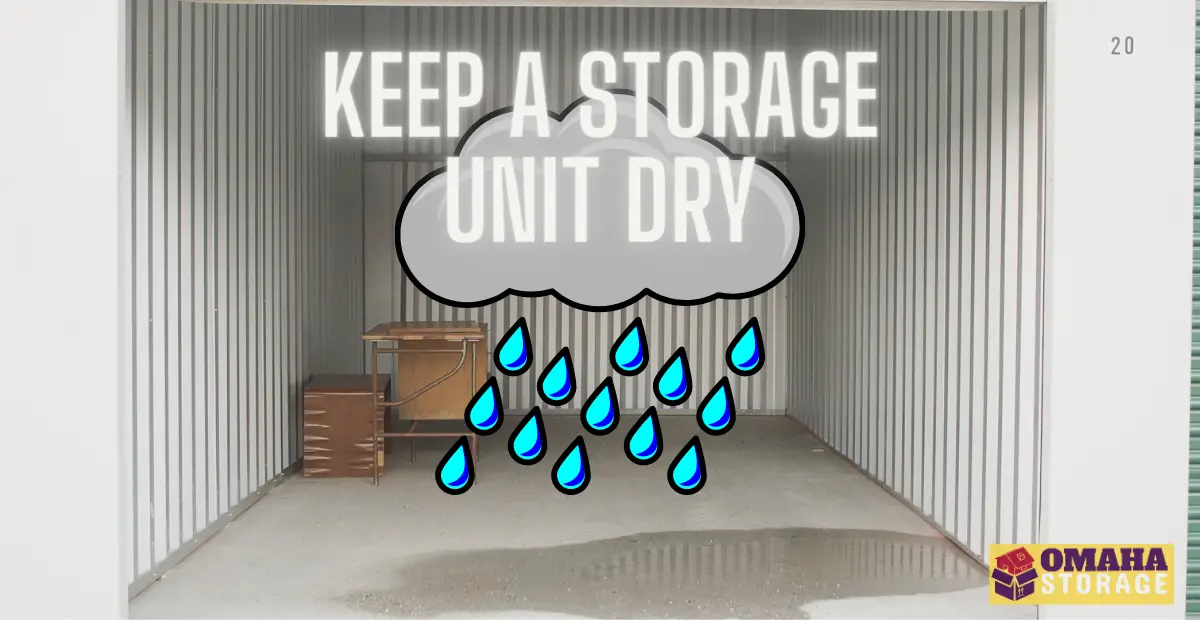Are you tired of opening your storage unit only to be greeted by the musty smell of dampness? What if your precious items have been ruined by moisture? Sadly… it can happen.
Today we are going to discuss how to keep storage unit dry as a bone.
As someone who has spent countless hours researching how to keep moisture at bay (I own an RV so it’s pretty much mandatory), I am perfectly poised to guide us through the labyrinth of dehumidifiers, silica packets and other mystical tools available for combating humidity.
If dampness in your storage unit causes you untold frustration every time you visit — then pull up a chair because we’re talking directly to YOU!
Understanding Humidity and Its Effects on Storage
In the quest to protect your precious possessions in a self-storage unit, understanding the dynamics of humidity is crucial.
The Science of Humidity
Humidity — it’s more than just weather talk. In layman’s terms, it denotes the concentration of water vapor present in the air reaching our self-storage units.
Air has a saturation point – beyond which moisture condenses into droplets. You’ve probably seen that morning dew on the grass when the air quality is just right. It happens in storage rooms too and that’s when we have storage problems.
How Humidity Affects Various Items in Storage
Humid environments can spell doom for arrayed items within storage spaces – from family photo albums discolored by mildew to devastating rust attacking metal antiques or electronic devices short-circuiting.
Let’s talk about steps to combat this unwelcome dampness.
Steps to Keeping a Storage Unit Dry
Let’s look at two factors that contribute to a damp or non-damp storage unit: temperature control and humidity reduction.
Choosing the Right Type of Storage Unit
Choose climate-controlled storage units, typically designed with insulated walls incorporating heating or cooling systems operational throughout seasonal fluctuations.
Cleaning and Preparing the Unit Before Storing Items
Before you start moving your items into the storage unit, it’s crucial to give the space a thorough clean.
This step is often overlooked, but it can make a significant difference in preventing mold growth. Use a mild detergent or a solution of bleach and water to clean the floors and walls, paying special attention to corners and crevices where mold-causing bacteria might be hiding.
Once the unit is clean, let it dry completely before moving your items in.
Maintaining Temperature Control within The Unit
Temperature control is a key factor in preventing dampness in your storage unit.
When temperatures fluctuate, it can lead to condensation, which in turn can cause excessive moisture build-up. This creates the perfect environment for mold growth.
To prevent this, try to maintain a consistent temperature in your storage unit. This might mean using a heater in the winter and an air conditioner in the summer.
The Importance of Air Conditioning or Heating Systems in Storage Units
Air conditioning systems do more than just cool the air. They also act as dehumidifiers, removing excess moisture from the air. This can be particularly beneficial in humid climates or during the rainy season when the risk of dampness is high.
On the other hand, heaters can prevent the condensation effect during colder climates. They keep the cold at bay, ensuring your items stay dry and mold-free.
Tips for Regulating Indoor Temperatures for Drier Environments
Investing in a smart thermostat can be a game-changer when it comes to maintaining a dry environment in your storage unit. These devices can be programmed to maintain optimum temperature levels, avoiding sudden swings that can lead to condensation.
Plus, many smart thermostats allow you to monitor and adjust the temperature remotely, giving you greater control over the conditions in your storage unit.
Preventing dampness in your storage unit is all about maintaining a clean, temperature-controlled environment. With a bit of preparation and the right tools, you can keep your belongings dry and safe from mold and mildew.
Remember, a little effort now can save you a lot of trouble (and damage) down the line when you know how to keep storage unit dry.


